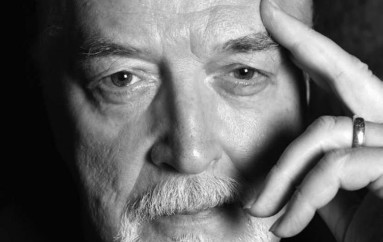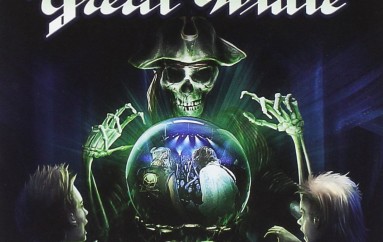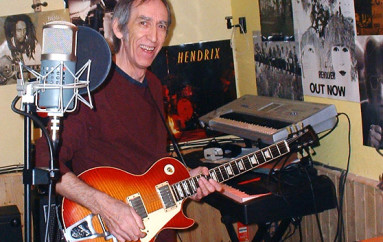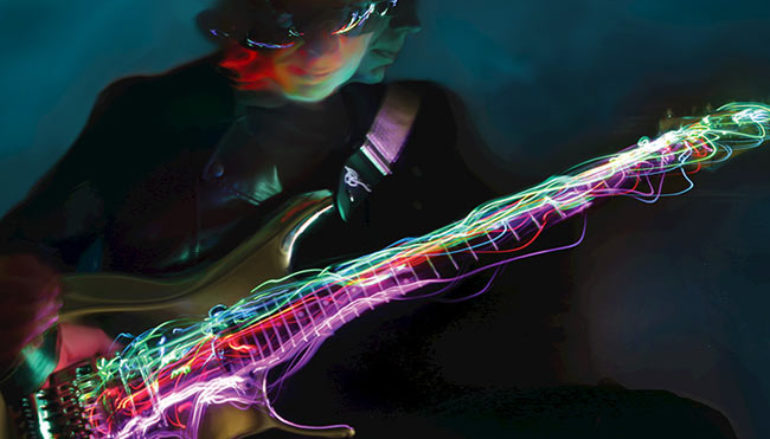
Joe Satriani: From the Squares to the Radiant
When you are waiting for Joe Satriani himself to call you for an interview, which was something I’ve been waiting for decades, there’s an array of questions from A to Z that you have to fit into a fixed slot of 25 minutes. Something that is pretty impossible, so you can relax and just talk on the recent things happening in the vibrant life of the Alien guitargod.
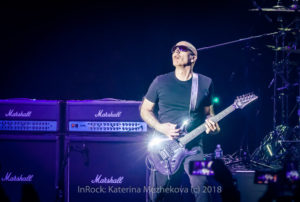 In July 2019, Joe is releasing the CD from his first band “The Squares”. The music that has been a Sleeping Beauty waiting for its record deal for 40 years! Intriguing, nostalgic, but the music is a catchy flashback to the 80s, where the roots of the future Satriani’s hits are waiting for its time to grow. Besides, we can see more of Joe’s art and music visualised in a mindblowing collaboration with one famous LA visual artists’ studio. So, please, share the joy of talking to Joe with us.
In July 2019, Joe is releasing the CD from his first band “The Squares”. The music that has been a Sleeping Beauty waiting for its record deal for 40 years! Intriguing, nostalgic, but the music is a catchy flashback to the 80s, where the roots of the future Satriani’s hits are waiting for its time to grow. Besides, we can see more of Joe’s art and music visualised in a mindblowing collaboration with one famous LA visual artists’ studio. So, please, share the joy of talking to Joe with us.
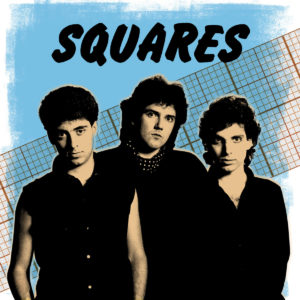 It’s really an honor for me to talk to you. I’m really happy to congratulate you with releasing “The Squares” music. What do you love about this music and your early years?
It’s really an honor for me to talk to you. I’m really happy to congratulate you with releasing “The Squares” music. What do you love about this music and your early years?
So many good things that come to mind when I hear these early recordings, because the enthusiasm and the creativity and the whole band working together was quite unique. You know, we were very different people, we had different styles, but somehow when we got together, we created a unique sound and had an enormous amount of energy. And so it’s always exciting to hear it. That reminds me of the younger days when we were really trying hard to do new things.
Do you regret not releasing it earlier?
That’s a good question. Sometimes I think, if we had released the album at that time, and if we were successful, that it would have been impossible to do solo work, because the people probably would not understand. As it turned out, nobody heard of “The Squares” when I started my instrumental career. So they took very seriously as an instrumentalist. So in a strange way, it was a kind of bad luck turned good that we weren’t successful.
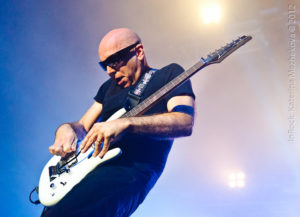 It did turn good, definitely! And what have you dreamt about back then, and what came true?
It did turn good, definitely! And what have you dreamt about back then, and what came true?
Well, as a band, of course, we wanted to get a major record deal and work with a famous producer, that would be the final ingredient to help us achieve what we wanted. We wanted to be as good as the Beatles, and the Rolling Stones and Led Zeppelin and anyone who was making records that were really enormously impactful on society, that’s what we wanted to do, but we just didn’t know how to do it. And when we kept that, if we get a record deal, and we get somebody like George Martin to help us produce, we would finally achieve what we want. So that’s what we never got to. I think one of the things that happened anyway was: once I realized that you simply have to start making records on your own and not wait for a producer, than, in fact, you can realize most of these dreams, you just have to work really hard.
What was the trigger for you to turn to your solo work and choose instrumental guitar music?
It was actually kind of accidental, I was recording my instrumental music as a way to start my own record company in my own publishing company. I was doing a lot in the last year that I was in “The Squares”, as a kind of a personal test to see if I could do it. Once I realized that I could do it all on my own, that I knew that that’s what I should be doing. But I wasn’t pursuing an instrumental career, I was doing it as a way to grow as a professional musician. I always assumed I would go to a band that had something in it. And that was what I was cut out to do. But as I kept recording the solo material, more people kept showing. Then all of a sudden, I had a record deal! Then my second full length record — “Surfing With An Alien” became a hit! So even up to that point, when that record came out, I didn’t have a band. And I never performed instrumental music in front of an audience. So I had no idea what to do. I mean, I knew I was not an instrumental artist, I was just a guitarist who was doing this on the side, you know…
 Yeah! This is again why this release is so precious for the music world, because we can trace your roots! From who you are now, how do you see that young lad from the 70s?
Yeah! This is again why this release is so precious for the music world, because we can trace your roots! From who you are now, how do you see that young lad from the 70s?
I was purposely playing less! I mean, I had arrived at the end of the 1970s, having spent two years trying my hardest to be the best guitar player I could. But I realized that the San Francisco music scene was actually rewarding people who played a lot less. So as a band, we decided, we’re not going to do long solos, we’re not going to try to make one of us a superstar, we’re going to present ourselves as 3 equal musicians. That means that we have to give up certain things about the way that we played, and limit what we show the audience we could do. But on certain songs, I think you can hear what’s going to be coming in a few years. On songs like “I love how you love me”, you can notice it from the techniques. And the amount of notes I’m playing and so on. Then, certainly, the chord sequence in a song, like “So Used Up” is quite unique, even through my use of suspended second chords, and something that end up being the hallmark of the first couple of records. So it’s there!
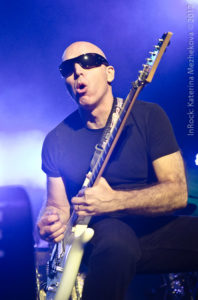 Indeed, quite recognizable! This is really beautiful to hear them and in that way to share your nostalgia and be a part of your past. Did you have any intention to maybe re-record your solos?
Indeed, quite recognizable! This is really beautiful to hear them and in that way to share your nostalgia and be a part of your past. Did you have any intention to maybe re-record your solos?
No, I didn’t ! We approach this project with a couple of rules. One was that we would not re-record anything. We would follow the original performances exactly the way they were recorded back in the early 80s. However, during the mixing, we discovered that there were other performances available to use for us! And even that there is one recording that we didn’t use back then because of the choices we were making about mixing. But now we were working in 96kHz digital mixer, not stuck on an old machine, like we were back in the 80s. So it gave us a lot more flexibility to make the record sound as if “The Squares” were a brand new, young band that just happened to be like a retro style.
And the recording process back then, was it quick and spontaneous?
It was very fast, because we didn’t have a lot of money and the studios and the tape were expensive back then. We had to save up our money for almost a year, and then we would prepare 4 songs only. Then we would go in the studio and record all we had very quickly, like a live band, you know, because we couldn’t afford to stay anymore. I think we recorded all in 1day! Then we mixed it the next 1-2 days, but it was spread out, like a few hours here, a few hours there. It’s mainly because we didn’t have the money to do it properly.
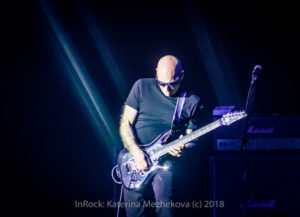 Yeah, I understand. Please, tell us more about the songs on the record, are there any stories behind them? For example, in a song titled “B-side Girl”? I see that, obviously, love was an important topic, what else was important?
Yeah, I understand. Please, tell us more about the songs on the record, are there any stories behind them? For example, in a song titled “B-side Girl”? I see that, obviously, love was an important topic, what else was important?
Well, we decided to put the very earliest songs, the earliest recordings first on the list to have some historical flow to the music. So the songs “Give it up”, “Everybody’s Girl”, “B-side Girl” and “I Need A Lot Of Love” are those 4 songs we did during the first set of sessions in Tewksbury Sound Recorders, up in the hills of Berkeley,CA. They were recorded by John Cuniberti back then. Those songs represent a lot of the things about what “The Squares” were. We wrote songs about relationships, we tried to have an upbeat attitude. There was a lot of negativity coming at that time from the classic rock area and certainly punk-rock genre. So we were trying to come up with a new way of approaching it. We thought it like this: all right, we’ll have a sense of humor about things, but let’s just sing about simple relationships between a boy and a girl, men and women, parties, clubs, having fun growing up, things like that. As the CD progresses we start to get into music that we wrote a few years down the line, like “So Used Up” and “You Can Light The Way”, which really focus more on the world subjects like the world ecology, personal development and trying to save people. This was a big shift in how we decided to represent ourselves as a band. Now I look at it, and it’s not a big deal. But back then it seemed like a really big deal to us can have many songs that show things that perhaps were underrepresented at the time. So in a song like “B-side Girl”, B-side means the other side of a single, you know, like there is a girl, the one that is overlooked and nobody thinks is a hit. But turns out to be the hit, the song that everybody really loves. And so that’s what that song was about: celebrating the underappreciated!
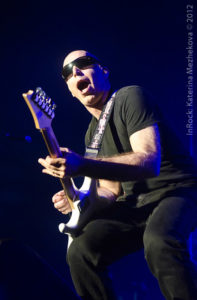 That seems to be connected with the whole story of “The Squares”, don’t you think?
That seems to be connected with the whole story of “The Squares”, don’t you think?
Haha, I think so. Yes. We were underappreciated!
Why have you chosen to make a cover on “I Love How You Love Me” (written by by Barry Mann and Larry Kolber — K.M.)?
Oh, Andy [Milton] (vocals and bass of “The Squares”- K.M.) brought that song into rehearsal one day. Jeff [Campitelli] (drums and vocals of “The Squares”- K.M.) and I really didn’t like it. We thought it was such a lightweight song. But we said: Okay, we’ll do it because you want to sing it. We said that we’re going to play it like it’s a joke, but you can sing it like it’s serious. So we started to work on it. And it became a song that our fans in the clubs really loved. So we would use it as an encore. Once we did a live show and it was the song where I decided I can play 3 solos and it wouldn’t matter. We just used it as an excuse to overplay at the time. And there is just one take of it, when the three of us are at the Hyde Street Recording Studios in San Francisco. But it turned out to be a really fantastic recording, and even more importantly, a real good document of what the band sounded like when the three of us played live. When I look back on it, I think we just should have done everything like that! It is so much more fun to listen to us when we were sort of being irreverent and going for it.
 Speaking of live shows, I know that Andy Milton passed away some time ago and he’s missed. Is there any chance of life performance of this material in any way?
Speaking of live shows, I know that Andy Milton passed away some time ago and he’s missed. Is there any chance of life performance of this material in any way?
I really don’t think so. It would be a bit strange to do it without Andy. In my craziest ideas, I thought maybe we can find a young band and ask them to learn the songs from the CD and put on one a show to get some fun. That spirit that young people in their teens or 20s have when they play music is an essential ingredient into pulling it off the right way. Some inexperienced raw energy would really be good to make it sound very authentic.Now Jeff and I, we are seasoned professionals, we’ve been decades on stage playing shows and sometimes I think we would just be too professional. (laughing)
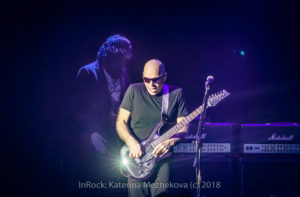 I was really glad to hear Glenn Hughes on your “What Happens Next?” album. Do you plan to continue working with him?
I was really glad to hear Glenn Hughes on your “What Happens Next?” album. Do you plan to continue working with him?
That would be great. I know he has been busy doing his own tours, and I think he might be starting up again with Black Country communion. I’ll be back in the studio in September to December with Kenny Aronoff on drums and Chris Chaney on bass guitar. As well as in October, I’ve got a Jimi Hendrix Experience tour, also with Kenny Aronoff on drums and Doug Pinnick from King’s X, singing and playing bass. So we’re all really busy. But that’s good.
So the work on your next solo record is in progress, right?
Yes, I am writing songs for a new record that will be released sometime in 2020.
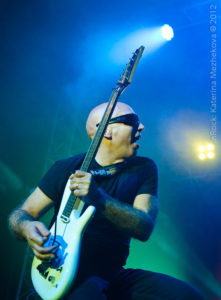 Oh, great news! And a bit of a tough question…This year marks 10 years since the first Chickenfoot album, is there still hope for you to reunite?
Oh, great news! And a bit of a tough question…This year marks 10 years since the first Chickenfoot album, is there still hope for you to reunite?
Yeah, I’m not sure that can happen. But we’re always hanging out with each other and talking a lot. So there’s always that chance. It’s one of those things about Chickenfoot, you never know what’s going to happen.
So is it the time problem and the fact that everybody’s so busy?
Yeah, that’s pretty much it. I’m not really sure. I think as usual, it’s a scheduling problem. It’s not easy to just get us together for the recording, and then once the record is done, nobody can guarantee that the guys are available to do any performances or tour. To tell you the truth, I think Sammy Hagar wants to retire. I don’t think he wants to tour anymore. He’s got a TV show and his liquor business that, I think, are more important to him at the moment.
Well, that’s life, and we thank you for that wonderful Chickenfoot albums that were released.
Thank you!
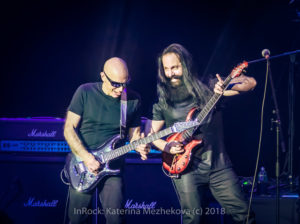 Cool! Speaking about the collaborations, which one is your most memorable G3 lineup?
Cool! Speaking about the collaborations, which one is your most memorable G3 lineup?
Oh, hahaha…Wow, that’s a question! You know, the most recent was the most fun! We really had a great time with John Petrucci and Uli Jon Roth. Besides, the shows have been great, the audience has been great, there was a lot of sharing between us as guitar players about what we do differently from each other and how we do it. So every night we’ve walked off stage we were excited to talk about what the other two players did. We asked each other questions. How do you do this? How do you do that? You know, it’s hard to pick out one G3 tour. They’ve all been fantastic and memorable. But that one is pretty fresh in my mind. It’s always great to play with Uli and John, they’re just tremendous musicians!
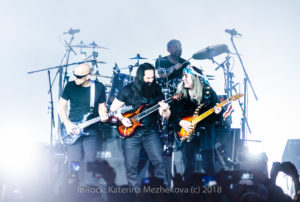 But you are opening up a new dimension to your music. I mean the new visuals of you playing guitar that you’ve just released with SceneFour. As I know, you’ve been using a customized glove that tracks, via light, the movements on the fretboard to construct the light visuals of your play onto canvas?
But you are opening up a new dimension to your music. I mean the new visuals of you playing guitar that you’ve just released with SceneFour. As I know, you’ve been using a customized glove that tracks, via light, the movements on the fretboard to construct the light visuals of your play onto canvas?
Yeah, that has been such a fantastic project. Right. it’s actually twofold. I was working on finishing up some of the first ground recently that is turned out really stunning. And I also did a lot of painting on top of the canvases, as well as a part 2 of the project where my acrylic painting are merged with the electronic representation of my playing. So this has been so interesting working with the artists at Scene Four.
 It’s is a unique fusion of mediums, it opens up your mind to perceive much more from your music. How have you got that idea?
It’s is a unique fusion of mediums, it opens up your mind to perceive much more from your music. How have you got that idea?
Actually, I’ve been working on my drawing and going through the process of sketches. Then over the years working on computer, sketching, and then for the last two years, I started working exclusively with canvases and acrylic medium. Then quite by surprise, we were approached by Los Angeles artists of SceneFour, who are specialising in visualisation of music. They’ve asked me to join the project and they didn’t know that I was a student of art. They were coming to me because they were really into the guitar playing. They’ve showed me all the art they had done with the drummers and some other guitar players, like Chad Smith and Scott Ian. So I was very excited about working with them. Then when we were doing the sessions, I showed them some of my artwork that I had on my phone and they were blown away. They said: Well, we have to work some of this into what we’re doing and see if we can create a collaboration. So I know that they’re gearing up I think they were always looking at the month of July as the month to go live. (We talked at the very end of June 2019 — K.M.) So when the project finally goes online, they’ll be both kind of work: not only the combination of the art, but also just the pure photographic art that they do so well and that the studio is known for. I’m very excited to have this project finally come out!
Katerina Mezhekova
Text and photo (G3, Crocus City Hall, Moscow, 2018 and G3 at Guitare en Scene Festival, St.Julien-en-Genevois, France, 2015).
Special thanks to Maxim Bylkin (SOYUZ Music) for arranging this interview.

